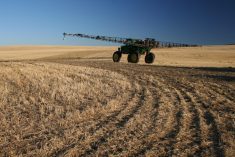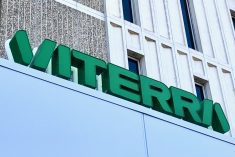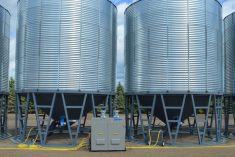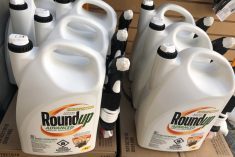Chicago | Reuters –– Monsanto on Wednesday effectively pulled itself out of the mergers-and-acquisitions flurry in the seeds and agrochemicals industry, nearly a year after making a bid for rival Syngenta.
The St. Louis-based company, which also reported a drop in second-quarter earnings, now sees its best dealmaking opportunities in smaller acquisitions, licensing deals and partnerships, its CEO Hugh Grant said.
“We now see this (industry rationalization) translating into further R&D or commercial partnerships for which we are uniquely positioned to participate and no longer see large-scale M+A as a likely opportunity,” Grant said on a conference call.
Read Also

Senft to step down as CEO of Seeds Canada
Barry Senft, the founding CEO of the five-year-old Seeds Canada organization is stepping down as of January 2026.
Monsanto’s move for Syngenta triggered a period of heightened M+A activity in the industry, where six large companies have long dominated. Syngenta in February agreed to be acquired by ChemChina for $43 billion, while Dow Chemical and DuPont struck a $130 billion megamerger last year (all figures US$).
Low crop prices and belt-tightening by farmers have put pressure on earnings, prompting companies to consider acquisitions. Monsanto, the world’s largest seed company, continued to tout itself as the industry’s “partner of choice.”
After its bid for Syngenta failed, Monsanto approached Bayer AG and expressed interest in its crop science unit, including a potential acquisition worth more than $30 billion, Reuters reported in March.
Farmers in the U.S. have been spending less on everything from fertilizers to seeds as grain prices hover near five-year lows and incomes have fallen to their lowest since 2002. This has forced Monsanto and DuPont Pioneer to offer the steepest discounts in at least six years.
“Monsanto every year has a lineup of new products that allows them to charge more than the prior year. This is an environment where that’s a little tougher of a conversation to have,” said Matt Arnold, materials analyst with Edward Jones.
Net income attributable to the company fell to $1.06 billion, or $2.41 per share, in the quarter ended Feb. 29, from $1.43 billion, or $2.92 per share, a year earlier. Earnings on an ongoing basis were $2.42 per share.
Monsanto reiterated its ongoing 2016 earning per share guidance of $4.40-$5.10 after lowering the outlook last month amid currency headwinds and heightened pricing competition,
Net sales fell 12.8 per cent, to $4.53 billion.
Analysts on average had expected a profit of $2.44 on revenue of $4.76 billion, according to Thomson Reuters I/B/E/S.
Monsanto shares were up about one per cent after falling more than 25 per cent over the past year.
— Karl Plume reports on agriculture and ag commodity markets for Reuters from Chicago. Additional reporting for Reuters by Arathy S. Nair in Bangalore.




















